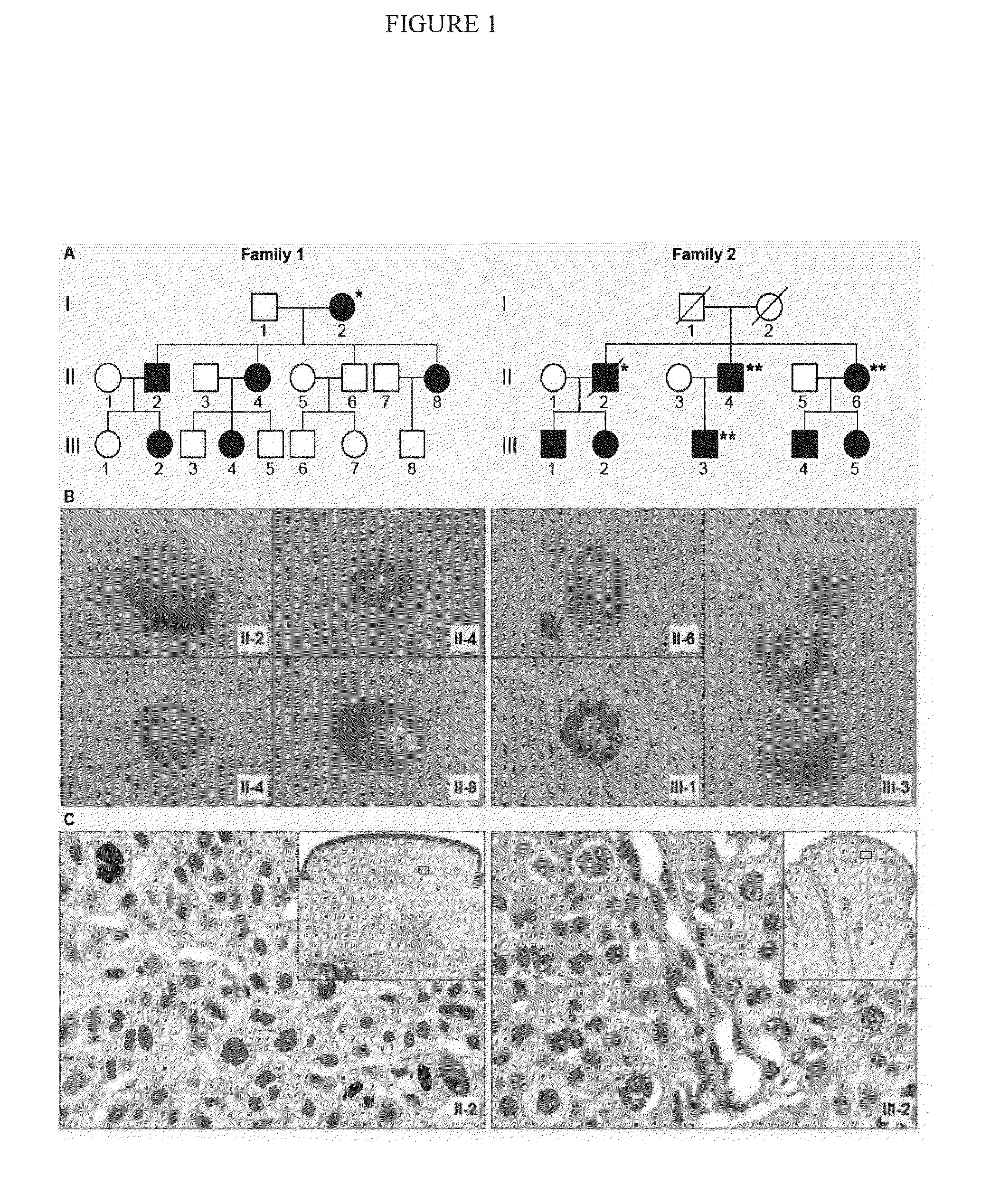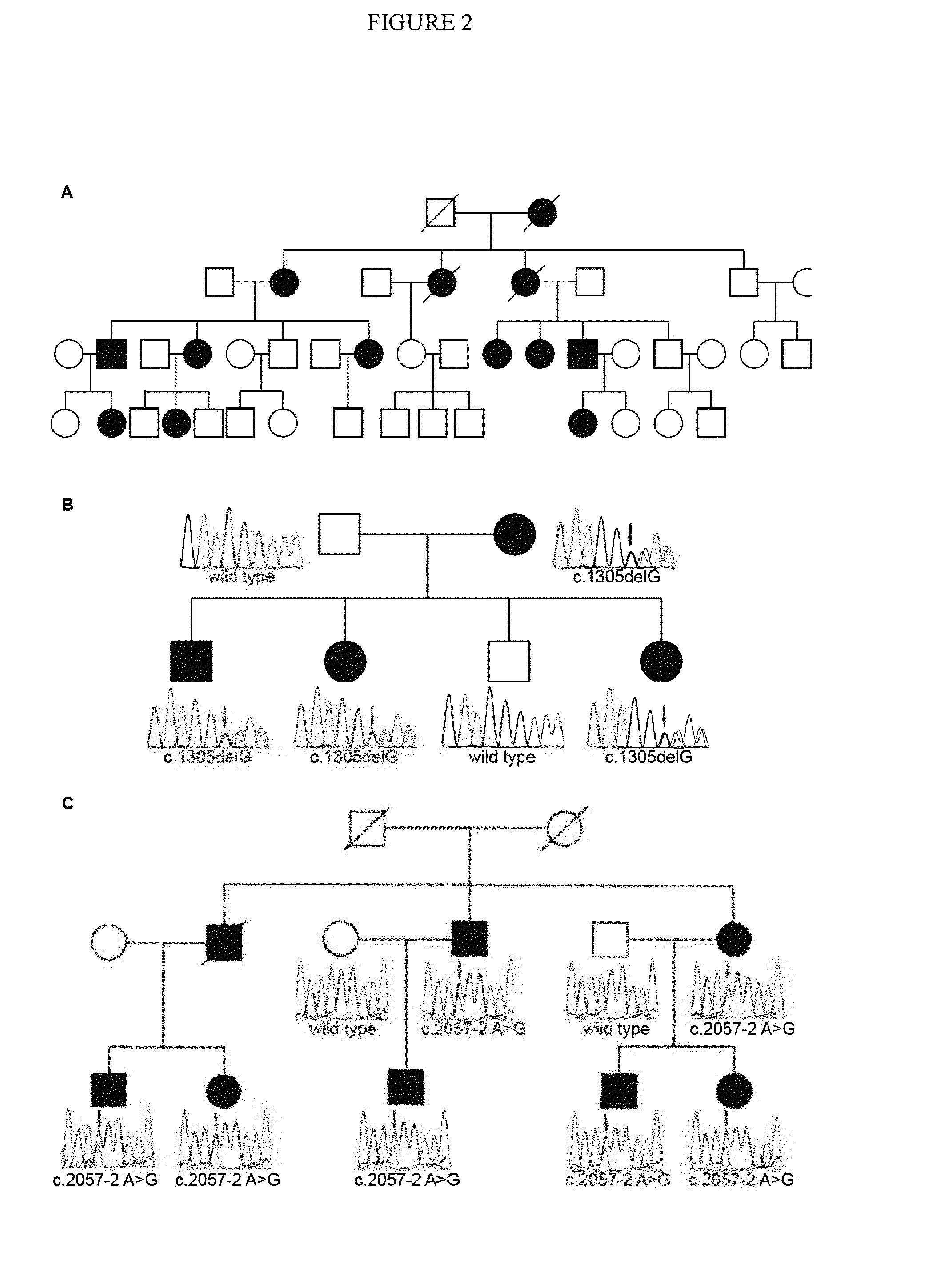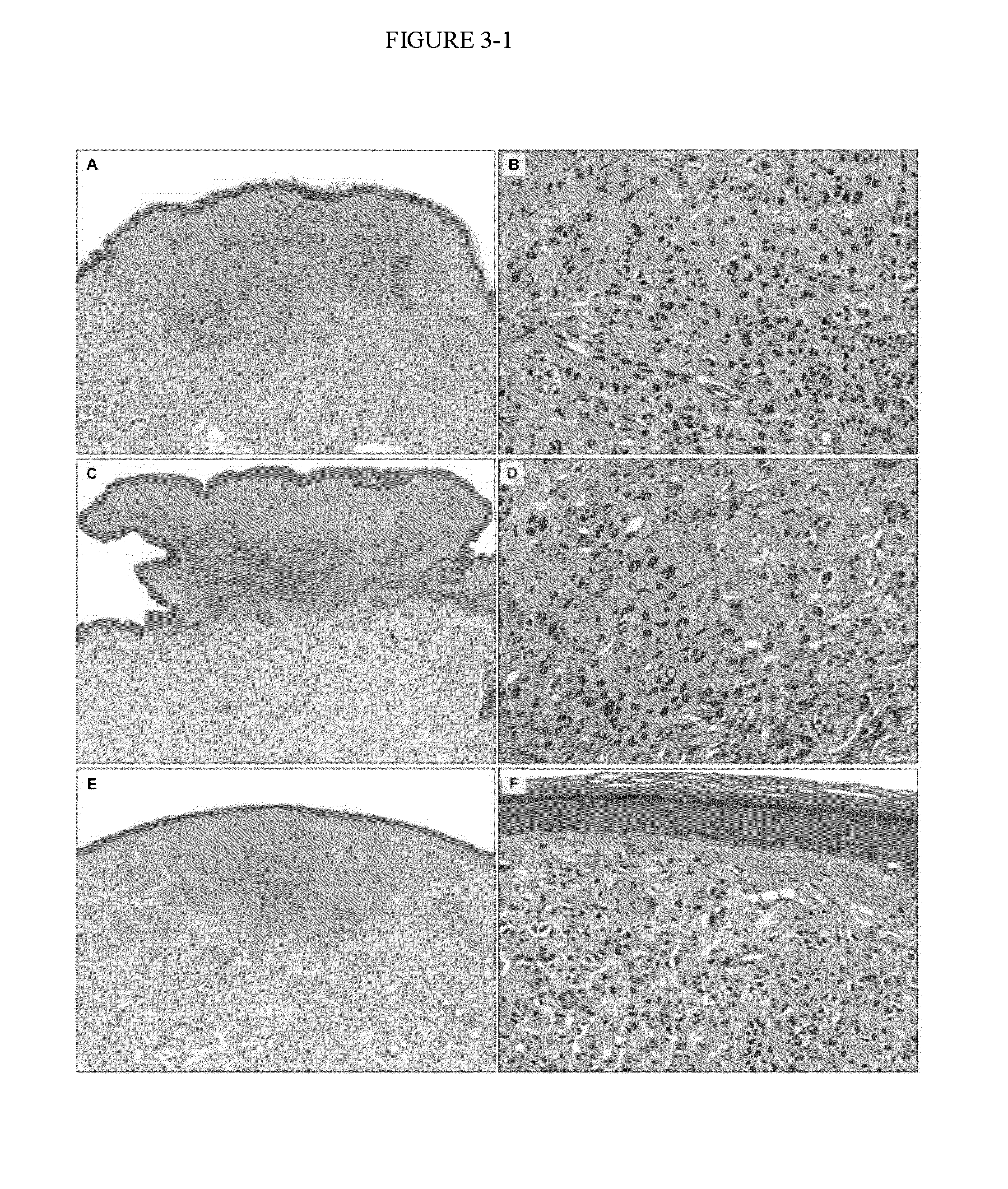Bap1 mutational analysis in determining susceptibility to, prognosis of, and treatment of melanocytic neoplasia
a technology of melanocytic neoplasms and mutations, applied in the field of melanocytic neoplasms, can solve the problems of heterogeneous definition of melanocytic neoplasms by conventional classification schemes, and achieve the effect of increasing the risk of malignant transformation or cancer
- Summary
- Abstract
- Description
- Claims
- Application Information
AI Technical Summary
Benefits of technology
Problems solved by technology
Method used
Image
Examples
example 1
Germline and Somatic BAP1 Mutations in Melanocytic Tumors
[0123]Hereditary cancer syndromes often stem from germline mutations that result in functional loss of one allele of a tumor suppressor gene. Subsequent somatic cell mutations that result in loss of function of the second allele may then lead to tumor formation, in line with the ‘two-hit hypothesis’ (Knudson, 1971). Well-documented examples of tissue-specific tumor susceptibility resulting from germline mutations in tumor suppressor genes are familial breast cancer (resulting from mutations in BRCA1), familial adenomatous polyposis (resulting from mutations in the adenomatous polyposis coli gene; APC), and retinoblastoma (resulting from mutations in the retinoblastoma 1 gene; RB1) (Garber & Offit, 2005).
[0124]Familial cutaneous melanoma is one example of a hereditary skin tumor syndrome. Approximately 10% of all melanoma cases are familial. Approximately one-third of familial cutaneous melanomas are caused by known germline mu...
example 2
A Distinct Subset of Atypical Spitz Tumors is Characterized by BRAF Mutation and Loss of BAP1 Expression
[0162]We recently reported that germline mutations in BAP1 cause a familial tumor syndrome characterized by high penetrance for melanocytic tumors with distinctive clinical and histologic features (see Example 1). Melanocytic neoplasms in affected individuals harbored BRAF mutations, showed loss of BAP1 expression, and histologically resembled so-called “atypical Spitz tumors” (ASTs). ASTs are an ill-defined and probably heterogenous group of melanocytic tumors that display histologic features seen in both Spitz nevi and melanomas. Their biologic behavior cannot be reliably predicted. Based on the histologic similarities of the familial tumors and ASTs, we hypothesized that a subset of ASTs might harbor genetic alterations seen in the familial tumors.
[0163]To address this hypothesis, we analyzed 32 sporadic ASTs for BRAF mutations, and for BAP1 expression. To determine the utility...
example 3
Towards an Improved Definition of the Tumor Spectrum Associated with BAP1 Germline Mutations
[0193]BAP1 is a tumor suppressor gene located on chromosome 3p21, a region which is deleted in several cancers, including mesothelioma, cutaneous and uveal melanoma, and cancers of the lung and breast. Somatic BAP1 mutations are common in uveal melanoma(1) and mesothelioma(2). We recently found and reported that germline mutations in BAP1 predispose to multiple clinically and pathologically distinctive epithelioid melanocytic tumors, and also to uveal and cutaneous melanomas(see Example 1 above, 3). Subsequent to our work, two other studies showed that BAP1 germline mutations predispose to other types of cancer—Testa and colleagues(4) reported that BAP1 germline mutations predispose to malignant mesothelioma and uveal melanoma, while Abdel-Rahman et al(5) suggested that BAP1 germline mutations may be also associated with lung adenocarcinoma, meningioma, and other cancers. Because of the invol...
PUM
 Login to View More
Login to View More Abstract
Description
Claims
Application Information
 Login to View More
Login to View More - R&D
- Intellectual Property
- Life Sciences
- Materials
- Tech Scout
- Unparalleled Data Quality
- Higher Quality Content
- 60% Fewer Hallucinations
Browse by: Latest US Patents, China's latest patents, Technical Efficacy Thesaurus, Application Domain, Technology Topic, Popular Technical Reports.
© 2025 PatSnap. All rights reserved.Legal|Privacy policy|Modern Slavery Act Transparency Statement|Sitemap|About US| Contact US: help@patsnap.com



